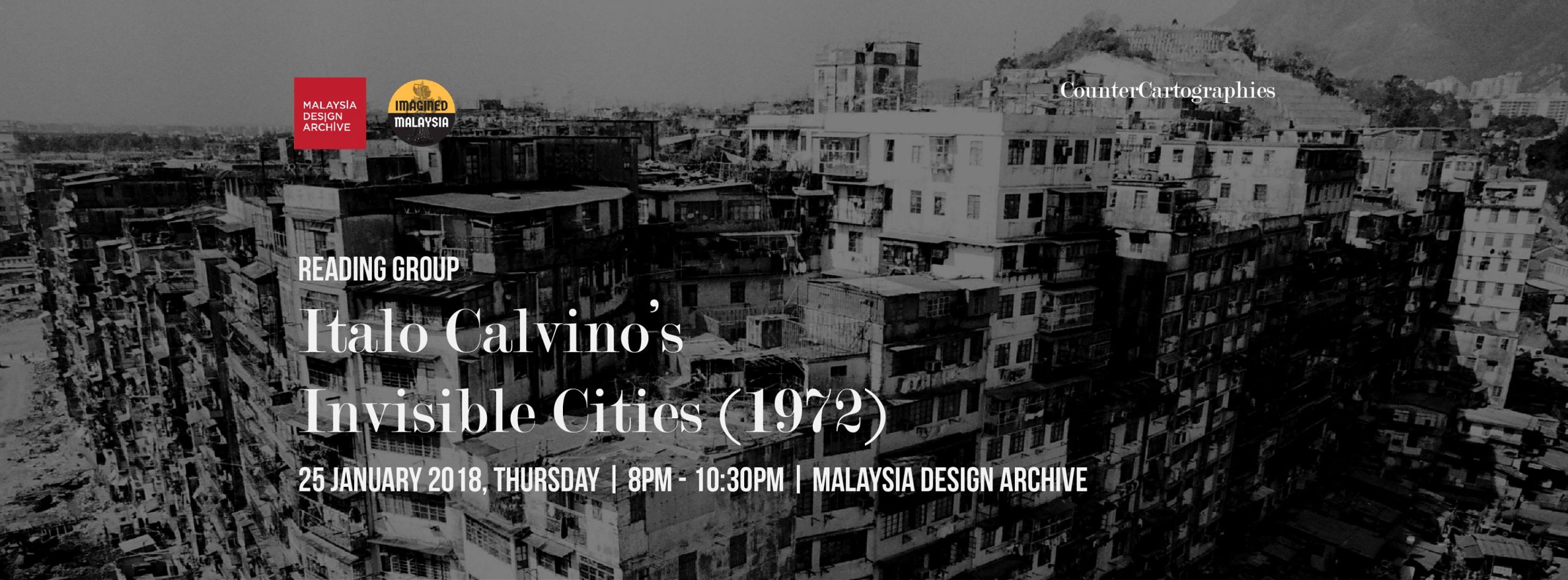
MALAYSIA DESIGN ARCHIVE and IMAGINED MALAYSIA
CounterCartographies
READING GROUP
Italo Calvino’s Invisible Cities (1972)
** Those who would like to come earlier, we are usually in by 6:30PM. Feel free to bring dinner along or tapau from across the street. Those requiring an area to pray, we can arrange a space for you. **
As part of our CounterCartographies initiative to understand visual culture in relation to the politics of space, our monthly reading group hopes to create conversations to consider ways in which the built environment can be understood both historically and theoretically. We welcome people from all backgrounds, language groups and walks of life to join in our discussion.
In our third instalment of this series, we move away from the visions of planners and architects to explore the experiences of the city as a space, an idea or a cultural narrative in literature. We will be reading Italo Calvino’s much-celebrated novella, Invisible Cities. Published in 1972, Invisible Cities posits an imaginary discussion between the Venetian explorer, Marco Polo and the Mongol emperor Kublai Khan. Throughout the dialogue, Polo describes a series of cities, each radically different from the other, each bearing the name of a woman.
These are fantastical and beguiling places. There’s Hypathia, a city of beautiful lagoons but where “crabs were biting the eyes of the suicides, stones tied around their necks”; Laudomia, the city of the unborn, whose inhabitants have constructed a parallel city for those yet to come; Octavia, the spider-web city, whose residents live suspended over an abyss, supported by a net they know won’t last long; and Argia, a city with earth instead of air.
At some point, you realize that Calvino is not talking about cities that are constructed of steel and concrete but cities of ideas. Each city represents a thought experiment, touching on everything from ideas about place and memory to the elusive nature of storytelling itself. Invisible cities is not a typical work of fiction. Calvino blends real and imagined details into a concoction of irreverent tales, brushing aside conventional forms of narrative to ruminate on the larger ideas that encapsulate the human condition.
Invisible Cities is a pleasantly disorienting book. Not because Calvino’s writing is difficult to penetrate, but simply because he packs so much into each sentence. The book can be read in a myriad of different ways. And each reading of it provides different insights and surprises.
In this session, we will attempt to do justice to one of Calvino’s most well-known text by making sense and teasing out the disparate ideas that are presented by Calvino’s imagined cities. These include but are not limited to Calvino’s fictional description of different cities, his philosophical examination of human nature and language, Calvino’s politics about the built environment and his thoughts on time, space and memory. Finally, we will contrast Invisible Cities to the two texts that we have previously read in our reading sessions in terms of their different narrative forms and conceptions of the city.
It is highly recommended that you read the book in its entirety. It’s not a long and tedious read. The book may be downloaded from: https://monoskop.org/
A separate reading guide will be provided two weeks in advance to better facilitate readers in understanding the text. To receive it, please sign up at:https://docs.google.com/
–
Image: Kowloon Walled City (1898 – 1994).


